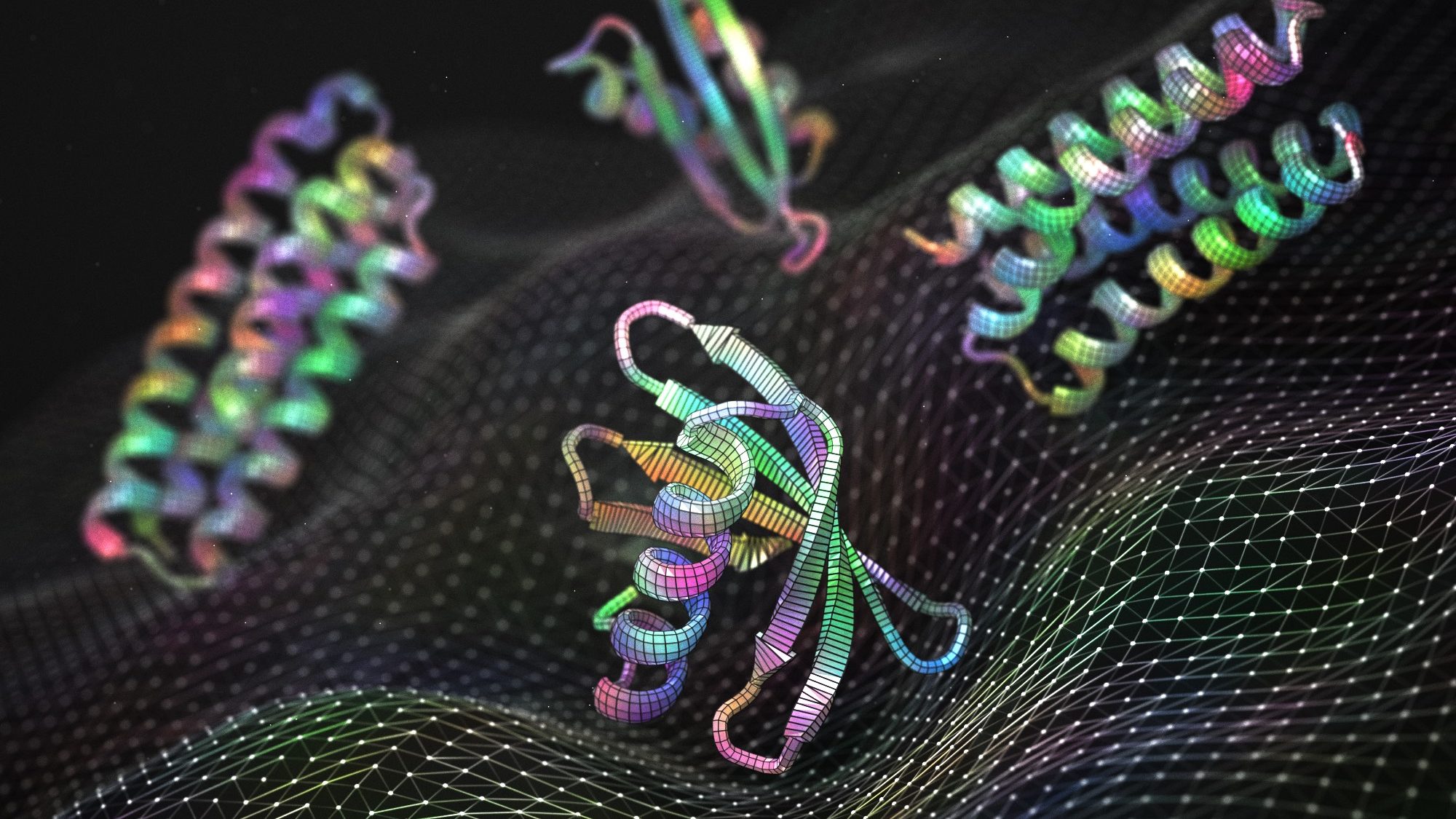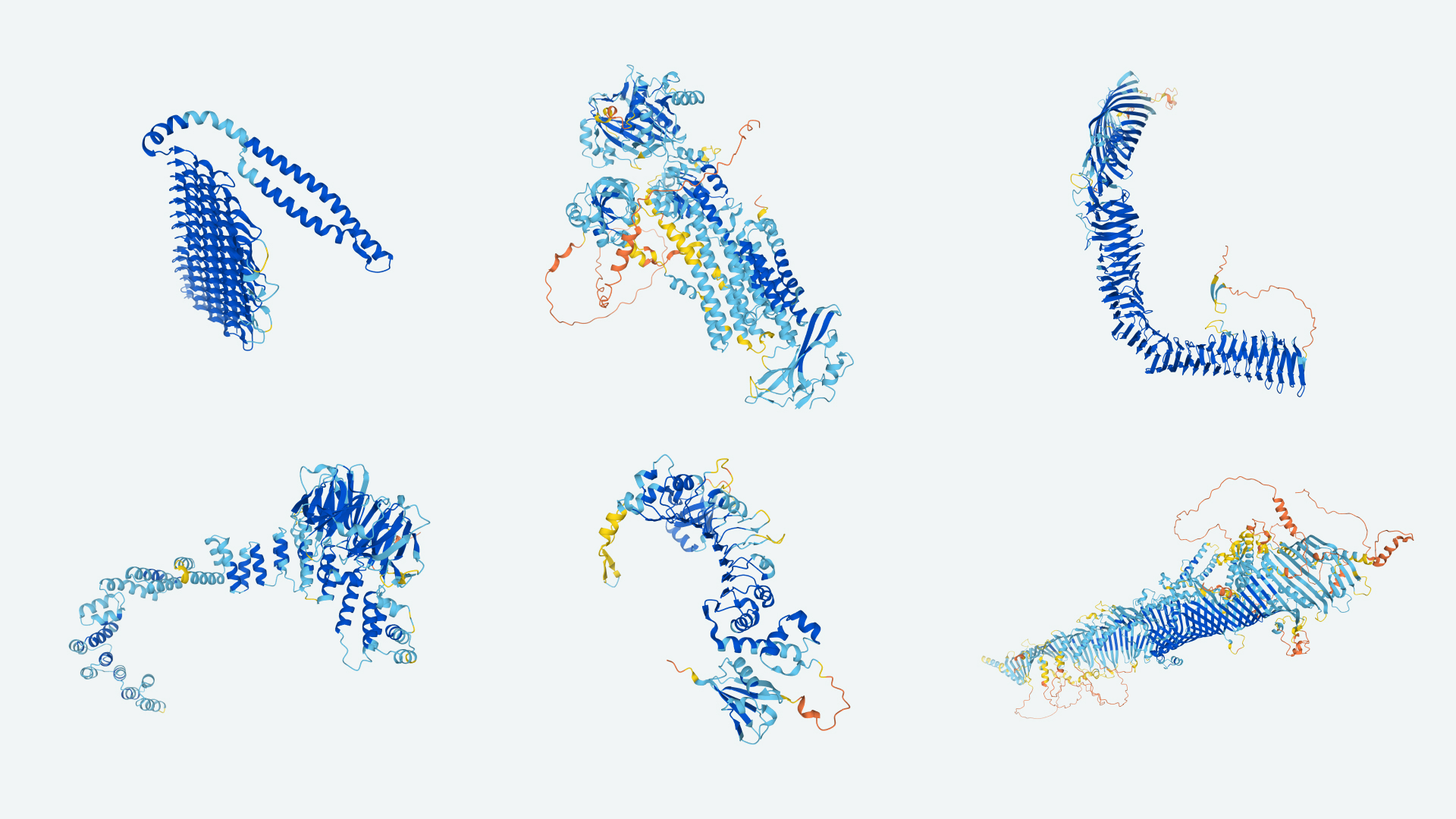Table Of Content
- Data availability
- Machine learning for functional protein design
- Directed evolution of a recombinase that excises the provirus of most HIV-1 primary isolates with high specificity
- Cas9 loosens its grip on off-target sites
- Extended Data Fig. 8 Targeted unconditional and fold-conditioned protein binder design.

5e, RFdiffusion designs are nearly indistinguishable from AF2 predictions of the structures adopted by the designed sequences, and many show little resemblance to previously solved protein structures (Extended Data Fig. 5d and Supplementary Table 1). Several of the oligomeric topologies are not seen in the PDB, including two-layer beta barrels (Fig. 3a, C10 symmetry) and complex mixed alpha/beta topologies (Fig. 3a, C8 symmetry; closest TM align in PDB 6BRP, 0.47, and PDB 6BRO, 0.43, respectively). A transmembrane helix-helix backbone pair with the desired geometry is selected from a database of membrane-protein structures (left). The original amino acid side-chains are discarded, and the helical backbones are extended to span the full length of a membrane.
Data availability
A set of heterodimers that have orthogonal binding specificities were designed using parametric backbone generation and HBNet (120). Self-assembled nanocages with higher-order symmetries were designed by symmetric docking followed by Monte Carlo interface sequence design (140, 141). Fusing the designed cages to membrane binding and endosomal sorting recruiting peptides induced the formation of nanocage-containing extracellular vesicles (142). The strategy of combining symmetric arrangement of protein chains and Monte Carlo interface sequence design was also successfully applied to design protein filaments (8), alpha amyloid-like structures (143), or two-dimensional materials (7, 9). Although difficult, interaction interfaces can also be designed without native motifs. After experimental optimization, the most potent design had a 100-pM affinity to spike.
Machine learning for functional protein design
Bioactive PeptidesChemically synthesized molecules with predictable structures and functions. As the field of protein design continues to evolve, the collaboration between these disciplines will remain crucial in realizing its full potential. Your body contains trillions of individual protein molecules that together perform the vital functions of life. In total, your DNA contains the blueprints for crafting about 20,000 unique types of protein – a collection known as a genome. One major aim is to not only discover new therapeutic proteins but to shorten their clinical development through “quality by design,” said Stuart.
How far protein design has come in serving healthcare - UW Medicine Newsroom - UW Medicine Newsroom
How far protein design has come in serving healthcare - UW Medicine Newsroom.
Posted: Tue, 28 Nov 2023 20:55:10 GMT [source]
Directed evolution of a recombinase that excises the provirus of most HIV-1 primary isolates with high specificity
Breakthrough in designing complicated all-α protein structures - Phys.org
Breakthrough in designing complicated all-α protein structures.
Posted: Thu, 04 Jan 2024 08:00:00 GMT [source]
The task was to create a vegan product range with enough differentiation from the regular protein waters.The result is is a colorful labels that convey the fruity flavors with a powerful V letter as a window. The composition and fonts convey strength and the high performance of the product.While creating the Vegan range, we also redesigned the regular protein waters to make use of the new brand icon letter V as a hero element. Show off your brand’s personality in your packaging with a custom protein label designed just for you by a professional designer. We’ve collected some amazing examples of protein labels from our global community of designers.
Cas9 loosens its grip on off-target sites

An alternative approach to physics-based energy terms is using statistics from known structures to derive potential functions (114). The first version of the scoring function in the Rosetta program for structural modeling, and the design was developed for protein structure prediction (115) and was a statistical potential function derived from structures in the PDB (16, 116) using Bayesian statistics (35). To adapt Rosetta for the protein design, all-atom detail and physics-based terms were incorporated (33, 38), which in turn led to considerable advances in both protein structure prediction and protein design (82, 117).
“If you can’t show that, then it doesn’t make sense.” Accordingly, most companies pursuing computational design are still focused on tuning protein function rather than overhauling it, shortening the leap between prediction and performance. Advances in design of new protein functions.A, a apixaban (yellow) binder designed by the Convergent Motifs for Binding Sites (COMBS) algorithm (25). B, A de novo protein (green) binds the severe acute respiratory syndrome coronavirus 2 (SARS-CoV-2) spike protein (gray) (4).

Despite this progress, a general deep-learning framework for protein design that enables solution of a wide range of design challenges, including de novo binder design and design of higher-order symmetric architectures, has yet to be described. Diffusion models10,11 have had considerable success in image and language generative modelling but limited success when applied to protein modelling, probably due to the complexity of protein backbone geometry and sequence–structure relationships. We demonstrate the power and generality of the method, called RoseTTAFold diffusion (RFdiffusion), by experimentally characterizing the structures and functions of hundreds of designed symmetric assemblies, metal-binding proteins and protein binders. The accuracy of RFdiffusion is confirmed by the cryogenic electron microscopy structure of a designed binder in complex with influenza haemagglutinin that is nearly identical to the design model.
Urry and colleagues later designed elastin-like fibrous peptides based on rules on sequence composition. Following the development of these computational tools, great success has been achieved over the last 30 years in protein design. There is great hope that the design of new proteins, small and large, will have uses in biomedicine and bioengineering.
To generate a new protein backbone, we first initialize random residue frames and RFdiffusion makes a denoised prediction. Each residue frame is updated by taking a step in the direction of this prediction with some noise added to generate the input to the next step. The nature of the noise added and the size of this reverse step is chosen such that the denoising process matches the distribution of the noising process (Supplementary Methods and Extended Data Fig. 2a). RFdiffusion initially seeks to match the full breadth of possible protein structures compatible with the purely random frames with which it is initialized, and hence the denoised structures do not initially seem protein-like (Fig. 1c, left).
Scoring functions in the computational protein design aim to distinguish designs with desired properties from those not adopting the intended structures and functions, typically by identifying low-energy sequence–structure combinations. Early protein energy functions (110) used harmonic terms for bond energies and a Lennard–Jones potential for van der Waals interactions. Modern physics–based energy functions (111, 112, 113) account for additional energy terms such as electrostatics and desolvation.
Illumination with blue light triggers Jα unfolding, and frees the peptide to interact with ePDZ. By fusing ePDZ to a transmembrane protein, it was possible to induce protein localization to the plasma membrane by illuminating cells with blue light. A number of peptide mutations were identified during the design process that varied in affinity for ePDZ. When combined with the ePDZ variants that bind peptides with different strengths, the authors were able to create a series of interaction pairs that covered a wide spectrum of binding affinities. In signaling networks a single protein may interact with multiple targets, and teasing apart the different activities can be a challenge. The simplest approach is to treat the binding and activating domains of a signaling protein as independent modules that can be mixed and matched.
“In our internal testing, this molecule is quite resistant to all of the variants that we’ve seen thus far,” says cofounder and CTO Gevorg Grigoryan, adding that Generate aims to file Investigational New Drug paperwork to clear the way for clinical testing in the second quarter of this year. More ambitious programs are on the horizon, although it remains to be seen how soon the leap to de novo design — in which new proteins are built entirely from scratch — will come. The breadth and complexity of problems solvable with RFdiffusion and the robustness and accuracy of the solutions far exceeds what has been achieved previously.
In recent years, machine learning has proven to be a powerful way to model and design proteins on the computer. Rather than having human experts try to encode their knowledge into software, this strategy allows computers to train themselves to detect patterns in proteins. Recognizing the impact of this innovation, the journal Science dubbed the application of machine learning to protein science their 2021 Breakthrough of the Year.
D, machine learning methods predict the probability of sequences given a structure (102) or the probability of structures given a sequence (109). The predicted probabilities can be used as scores for the compatibility between sequences and structures. The computational de novo protein design is increasingly applied to address a number of key challenges in biomedicine and biological engineering. Successes in expanding applications are driven by advances in design principles and methods over several decades. Here, we review recent innovations in major aspects of the de novo protein design and include how these advances were informed by principles of protein architecture and interactions derived from the wealth of structures in the Protein Data Bank. We describe developments in de novo generation of designable backbone structures, optimization of sequences, design scoring functions, and the design of the function.


No comments:
Post a Comment